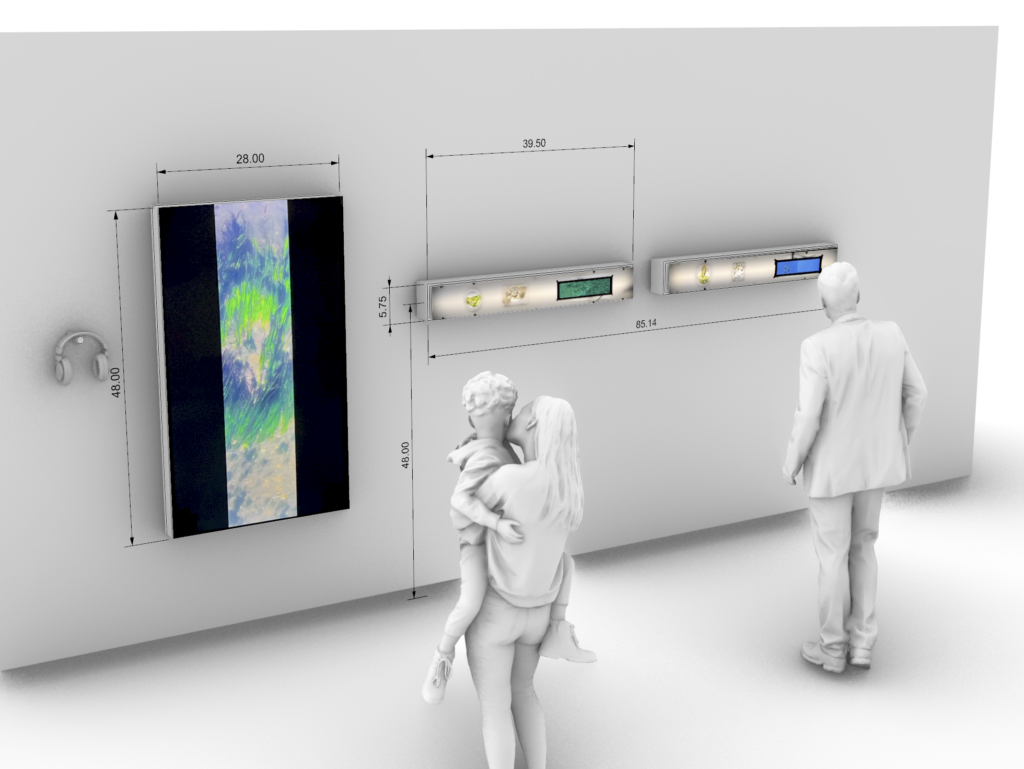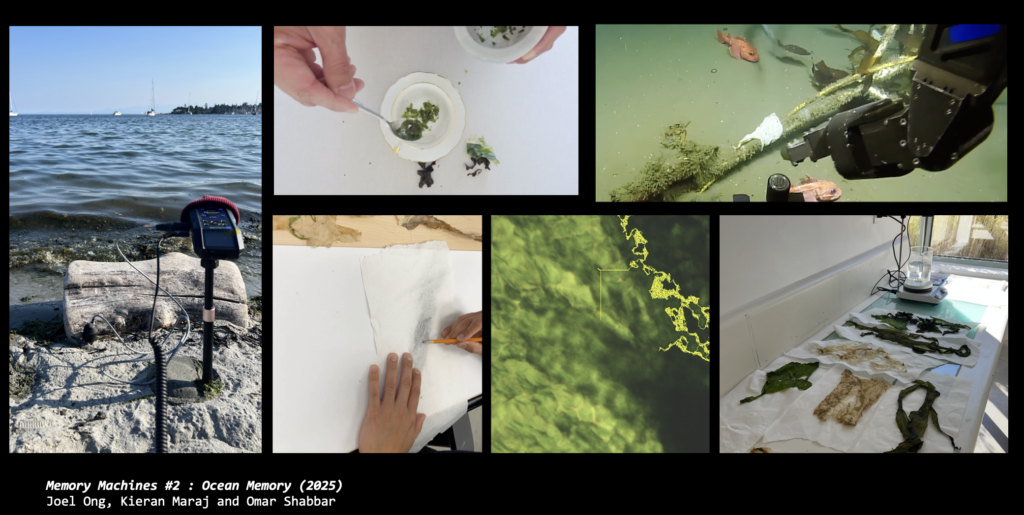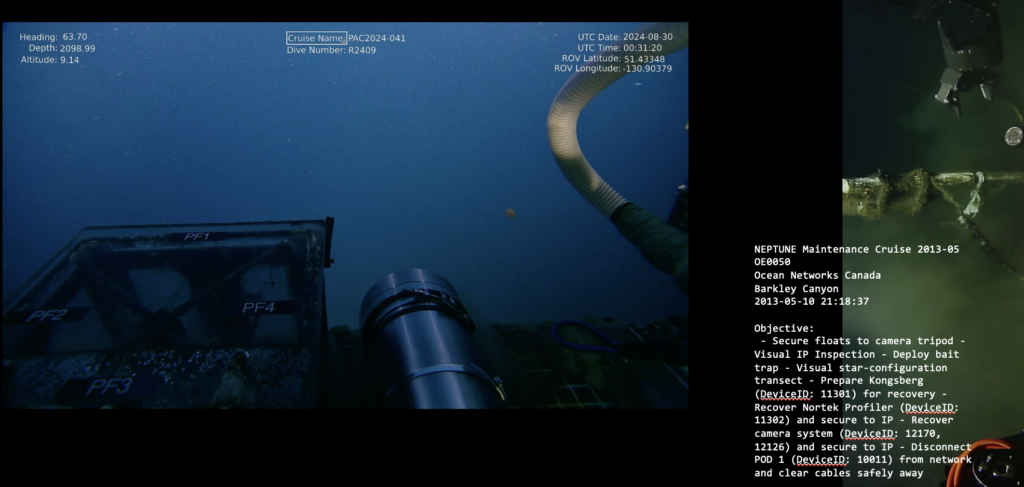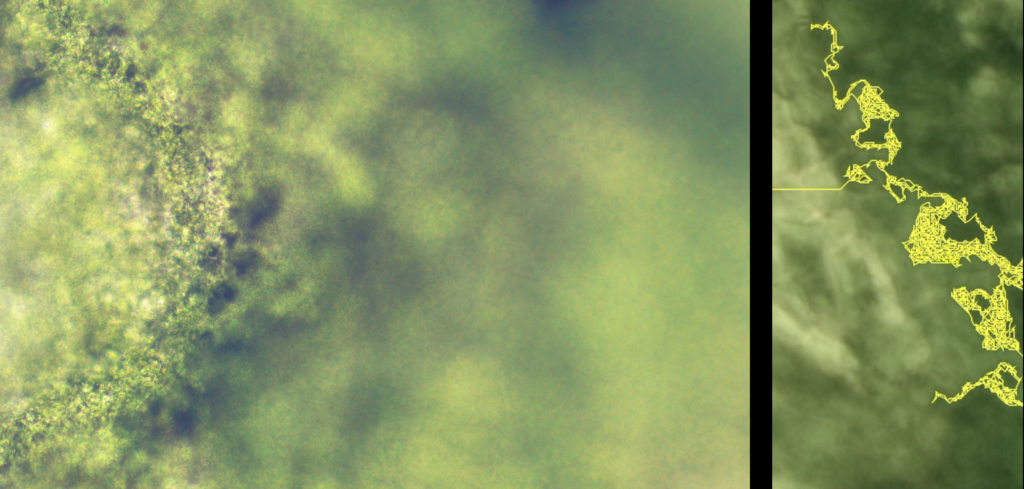

Presentations:
Oscillations, Centre culturel canadien, Paris. (curated by Catherine Bédard, Samuel Bianchini, Marie-Pier Boucher, Alice Jarry) October 16th, 2025 – January 16th, 2026 Collaborative work with Omar Shabbar and Kieran Maraj
Afterglow Exhibition, Gales Gallery, Toronto Feb 2025. (curated by Nina Czegledy and Joel Ong)
Memory machines is an ongoing archival project exploring the entanglement of historical narratives and the physical storage devices within which these exist, age and percolate. The 2nd iteration in this series, Memory Machines #2 : Ocean Memory (2025) focuses on the creative and poetic ways coastal environments become portals for memory and the way earthbodies (humans and more-than-human bodies) become implicated as inscription devices within them.
This project features an array of experimental research-creation processes.
For the Oscillations show in 2025, the project featured a video in 3 études –
1. Serendipitous accounts of deep-sea machines that facilitate contemporary knowledge of the oceans undergoing processes of vital maintenance are cast as performers in a sub-marine theatre
2. sea kelp, a common occurrence on the beach that in its washed-up, dried out form is often an outlier in data portraits of interstitial shoreline ecologies is analyzed at a micro level, and its creases traced with a computational inscription
3. kelp-tea brewing and divination as an experiment in unravelling alternative forms of communication.
Collectively, the project is an entry point for us to continue engaging with the rich and contested notions of the coast and an invitation to consider together aesthetic entry points to these broader conversations.



For the Afterglow exhibition, Ocean Memory focused on experiments in bio- and chemo- luminescence inspired by light as a mode of interspecies communication in the deep sea. Our research involved the dinoflagellate Pyrocystis fusiformis and a deep dive into physical activation of bioluminescence in vitro through a robotic arm that was programmed to simulate wave currents. The presented experiment simulates their bioluminescence through backlit particles in a Petri dish of high-density liquid that reminisces waves. This prototype has guided further experimentation in ‘seeing’ through more-than-human languages, proposing ways this animacy can encode intent, store, and variably reveal affect for organisms at microscopic scale.


